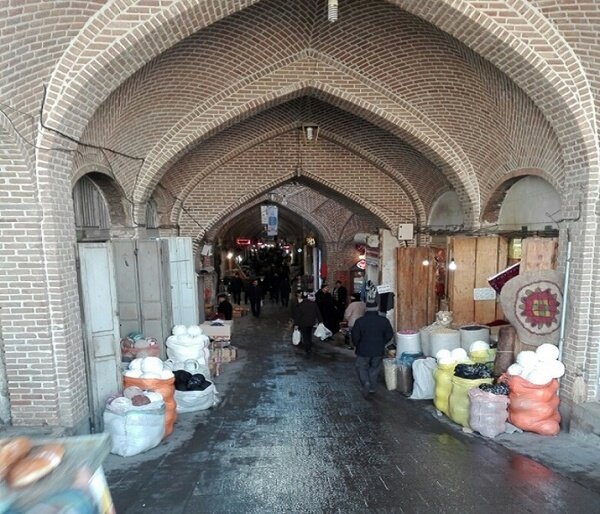INSUBCONTINENT EXCLUSIVE:
TEHRAN – A team of cultural heritage experts has commenced work to construct replicas of some missing brick vaults inside the
UNESCO-registered Bazaar of Tabriz.A restoration project has commenced constructing some vaulted ceilings which were collapsed in the 1970s
in the Bazaar of Tabriz, East Azarbaijan’s tourism chief said on Sunday.The ceilings had been replaced by ones made of glass sheets, which
distorted the visual image of the Sadeqieh thoroughfare of the bazaar, Ahmad Hamzehzadeh explained.A jumble of interconnected covered
passages that stretches for about five kilometers, the bazaar has been a melting pot of cultural exchange since antiquity
The centuries-old bazaar was mentioned by Marco Polo when he traveled across the Silk Road in the Middle Ages.It embraces countless shops,
over 20 caravanserais, and inns, some 20 vast domed halls, bathhouses, and mosques, as well as other brick structures and enclosed spaces
Its history dates back to over a millennium, however, the majority of fine brick vaults that capture most visitors’ eyes date from the
15th century.Tabriz became the capital of the Mongol Il-Khan Mahmud Gazan (1295–1304) and his successor
Timur (Tamerlane), a Turkic conqueror, took it in 1392
Some decades later the Kara Koyunlu Turkmen made it their capital, it was when the famous Blue Mosque was built in Tabriz.The ancient city
retained its administrative status under the Safavid dynasty until 1548 when Shah Tahmasp I relocated his capital westward to Qazvin
During the next two centuries, Tabriz changed hands several times between Persia and the Ottoman Empire
During World War I, the city was temporarily occupied by Turkish and then Soviet troops.Bazaars in ancient Iran A bazaar is, originally, a
public market district of an Iranian city
The bazaar of the ancient Islamic world was vividly described in the folktales of “The Thousand and One Nights”
Located in a distinct quarter of a town, it was bustling and noisy by day in contrast to the quiet residential quarters
Access was forbidden after sundown.Distinctive architecture characterized some bazaars—such as those built at Kashan and Isfahan in Iran
They were usually roofed for protection against the hot desert sun, either with a single roof, with individual vaulted cupolas or domes, or
with awnings.From another point of view, bazaars are also synonyms for foods, with their unmissable colorful stalls of vegetables, herbs,
Yet, most of these ingredients might be mysterious to a foreign eye
Teahouses help punctuate the walk and a traditional restaurant is a perfect place for lunch.Browsing through a traditional bazaar may
provide new experiences and fresh points of view on the ancient land
Such excursions can be made either in person or by “off-the-beaten-track” tours
Not only it’s an opportunity to discover dozens of unique local ingredients, but it’s also a chance to taste street foods and
delicacies, in some traditional bakeries known only by locals and shopkeepers.People watching and even mingling with them in the bazaars is
one of the best ways to take the pulse of the country
Bazaars have traditionally been major economic and social centers in any Iranian city.AFM

